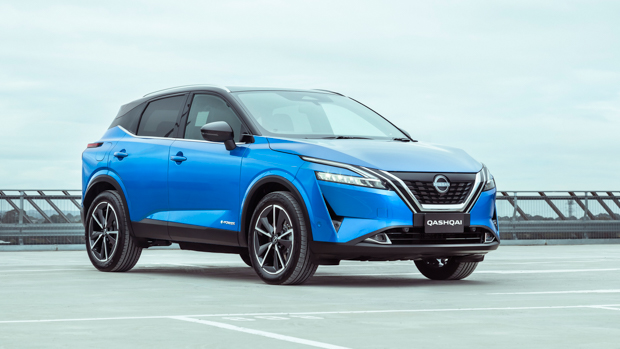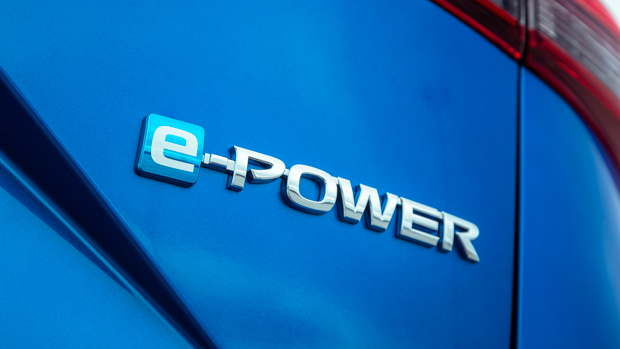-
Car Reviews
- Car News
-
Car Comparisons
Latest comparisons
- Chasing Deals
It’s the battle of the small hybrid SUVs, with Chasing Cars pitching three fresh rivals against each other on the spec sheet
Pure electric vehicles might be the talk of the town in 2023, but now, more than ever, we are seeing a greater number of hybrid-electric vehicles coming onto the Australian new car market.
Many of the major manufacturers now sell an electrified model of some kind, and the small SUV segment has recently adopted a host of enticing new options.
Enter our three rivals for our latest Chasing Cars spec battle: the upcoming Nissan Qashqai E-Power, the new-generation Hyundai Kona Hybrid and, lastly, the soon-to-be-released 2024 Toyota C-HR Hybrid.
In this comparison, we’ll take a look at the most affordable hybrid variant offering for each, what they cost, what they feature and how safe they’re likely to be for owners.
So, let’s dive in and get started!
Starting off with Nissan’s Qashqai E-Power, this model is only available in one hybrid grade, and a high grade at that, called the Ti E-Power. It’s priced from $51,590 before on-road costs.
Next in the lineup, we have the Hyundai Kona Hybrid that is available in base model ‘Kona’ and Premium guises. The pair start at $36,000 and $43,500 respectively before on-road costs.
Rounding out the group is the new Toyota C-HR which will be available in early 2024 with hybrid powertrains exclusively, and starts from $42,990 before on-road costs for the entry-level GXL. The mid-tier Koba starts from $49,990 before on-road costs, and the flagship GR Sport costs $54,990.
Starting off the spec list, Nissan’s Qashqai E-Power is based on the flagship Ti grade, and features the following notable features as standard:
Up next is the Hyundai Kona Hybrid, which in its most affordable base guise, comes standard with the following features:
For those interested in the higher grades of Kona Hybrid, such as the $43,500 Premium, buyers will receive additional features including:
Next up on the spec sheet, the new base Toyota C-HR GXL hybrid, comes from the factory standard with the following features:
And, if you’re interested in the $49,990 Koba, this variant adds:
With the $54,990 GR Sport, Toyota adds:
It’s great to see that each of these small hybrid SUVs offer a large 12.3-inch centre touchscreen, along with other key features such as the Apple CarPlay and Android Auto connectivity, wireless phone charging and satellite navigation.
Nissan has been talking a lot about its E-Power hybrid technology, and soon we’ll be able to try the Qashqai with this hybrid-electric technology installed.
The Qashqai E-Power propels itself down the road thanks to a 1.5-litre turbocharged three-cylinder engine that is mated to a single electric motor.
It’s front-wheel drive, and unlike some other hybrid systems, Nissan’s E-Power system does not require the petrol engine to have a physical link to the wheels, and instead it acts as a generator to produce electricity for the onboard electric motor.
The electric motor, which is permanently connected to the driven wheels, then drives the car.
All up, the Qashqai E-Power produces 140kW with its electric motor, and 116kW of power from the turbocharged petrol engine.
The Hyundai Kona hybrid, meanwhile, uses a 1.6-litre naturally-aspirated four-cylinder engine that is coupled with an electric motor. The combustion engine and electric motor make a combined system output of 104kW/265Nm.
Toyota’s new generation of C-HR is all hybrid for 2024. Two hybrid setups will be available, including a 2.0-litre hybrid setup with maximum outputs of 145kW for the GR Sport, however the GXL and Koba use a 1.8-litre petrol engine with an electric motor to produce a combined 103kW of power. A torque figure is not stated for the Toyota hybrid system.
The Nissan Qashqai’s hybrid system is one of the most powerful in class, but it’s worth noting that the upcoming Toyota C-HR Hybrid can produce up to 145kW of combined power in GR Sport trim.
We can only go off manufacturer’s claims here, but beginning with the Qashqai E-Power, Nissan claims that this hybrid model will consume 5.2L/100km on the combined cycle.
The Hyundai Kona Hybrid, meanwhile, has a much lower claimed combined fuel economy of just 3.9L/100km.
Toyota is yet to release fuel consumption figures for its upcoming C-HR small SUV.
It’s hard to go past the Hyundai’s very low 3.9L/100km combined fuel consumption, however we are interested to note that the Toyota C-HR’s figures will be.
Nissan’s new Qashqai E-Power hybrid has been rated by ANCAP, where it received a five-star score in 2021.
As standard, the Ti E-Power features the following safety features:
The new-generation Hyundai Kona Hybrid, meanwhile, has not yet been rated by ANCAP in Australia, or with Euro NCAP.
As standard, the new Kona hybrid includes the following safety features:
The new generation Toyota C-HR Hybrid has not yet been tested by ANCAP, with the rating of its previous generation to expire in Australia in December 2023.
Toyota is yet to announce further details of its next-gen C-HR’s safety suite. This will likely be determined shortly, before the model is released in the first quarter of 2024.
As is always the case with Chasing Cars spec battles, it’s hard to pin down a clear winner based on a spec sheet alone.
However, considering each of the core areas discussed, the Hyundai Kona Hybrid seems to us to be the most bang-for–your-buck option, with an impressive array of entry-level equipment and standard safety inclusions, even in the most affordable grade.
We look forward to driving all of these new small SUV hybrids in the coming months, as they trickle their way into the Australian new car market.
Latest news
About Chasing cars
Chasing Cars reviews are 100% independent.
Because we are powered by Budget Direct Insurance, we don’t receive advertising or sales revenue from car manufacturers.
We’re truly independent – giving you Australia’s best car reviews.













